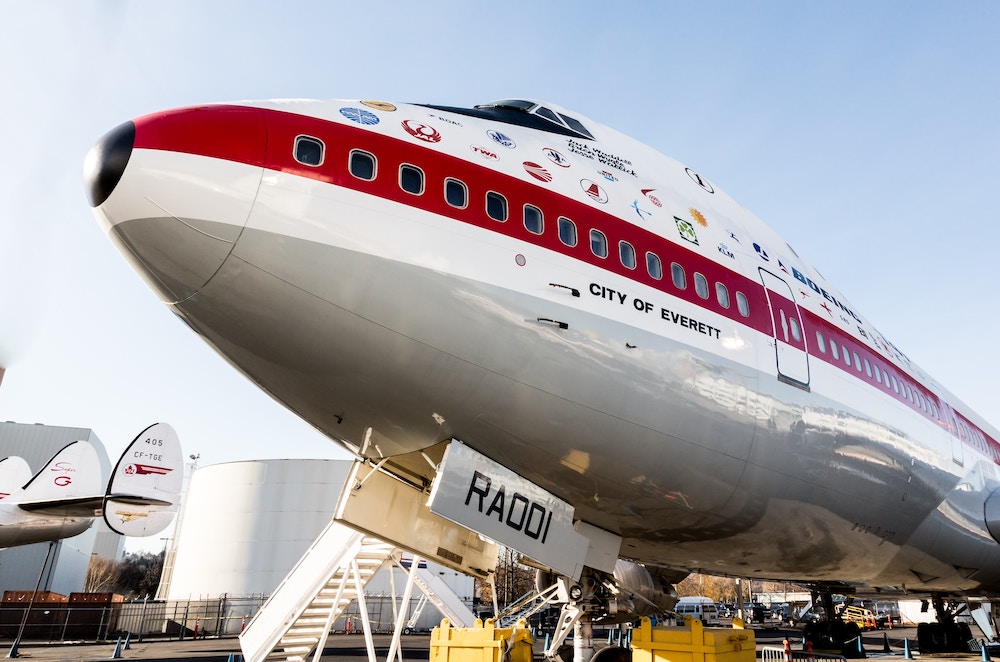
For many years, the technology used in aviation has remained somewhat static. While standard office tools have been implemented, and many software systems have been developed or adopted for use in the industry, not much in the way of breakthrough technology has been developed or implemented.
This still leaves a paperwork-heavy industry that relies on archaic systems to track aircraft parts, which leaves a huge vulnerability for counterfeit parts, or for the history of specific parts or components to be compromised. The answer is, of course, implementing commercially available software solutions to increase the overall traceability in the aviation industry. In this case, we are talking about institutional-grade blockchain.
A lot of the noise surrounding blockchain began when it was seen only (or primarily) as a retail solution. But it is no longer a retail-centric investment tool; blockchain is a solution that calls for extensive investment into the institutional-grade infrastructure. Let’s look at how this retail finance tool is posed to upend how the aviation industry handles the issue of traceability.
Building A Transparent Aviation Supply Chain
The aviation supply chain must be transparent; no other industry requires such a high level of visibility regarding component or part origin and authenticity. Aircraft parts, regardless of location on the aircraft, must be built to precise tolerances and standards.
Because of this high regulatory burden, aviation remains the safest mode of transportation globally and by a wide margin over many others. And this comes at a cost: certified and authentic aircraft parts are very costly.
Not all parts are created equally; some require more oversight than others. It is also essential to consider how specific components are bought and sold. For instance, a jet engine is procured similarly to an aircraft itself, which makes sense, considering some units cost several million dollars for the engine alone.
Since the same engine is used across multiple airframes (take the CFM56 family of engines, for instance), they may be removed from an aircraft being decommissioned and sold as an individual component. Another airline might buy it and put it on their own aircraft. You can understand why having a flawless track record of where that engine came from, what aircraft it was on, and who worked on it is so important.
But think about the sheer volume of paperwork on an engine over the course of a decade of use. How many hands have touched that engine for service? How many aircraft may it have been on?
What Exactly Does Blockchain Do For The Aviation Industry?
Blockchain is, by definition, a secure ledger. It was designed for the finance industry, but the software is customizable to all industries requiring tamper-proof asset tracking and inventory.
Historically, warehouse inventory management for all industries, including aviation, was a reactive model. A part or item was ordered, sold, shipped, and then replenished for future sales. The forecasting models for future demands were still mostly a model of guesswork. Far too easy to overestimate demand and end up with a surplus or underestimate and remain undersupplied.
Blockchain changes two important metrics in aviation:
- It provides the predictive component that has been lacking throughout the entire evolutionary cycle of inventory and supply chain management. Warehouse inventory management can more accurately predict demand with blockchain, guaranteeing that it always has the right kind and amount of stock to meet the expected demand. The use of technology lowers the possibility of lost sales while optimizing revenue and profitability.
- Just as importantly, blockchain provides the security and supply chain transparency on both ends of the transaction that suppliers and customers have been looking for.
The supply chain is best understood as what it is – a vast network of interrelated companies. It’s hard even to put a number on how many aviation parts and component vendors there are, but it’s a lot. As in, thousands. Maybe even tens of thousands. Some are very broad companies offering a generous range of parts, while others are highly specialized (blind rivets, specific unique fasteners, etc.).
Blockchain Is A Secure Ledger
Why does blockchain matter? Blockchain is infant technology swimming upstream against legacy technology. If given the appropriate infrastructure, though, it can completely revolutionize aviation parts inventory management.
For a while, it will still be a reactive state as all existing parts and aircraft are tracked using legacy models, but over time that will fade away as blockchain tracks all transactions and inventories from the beginning.
As new production parts, components, and aircraft are built, their entire history will be stored on a secure ledger from the beginning. The data on the item in question will not have any history that is untraced or could be tampered with.
It Is Infinitely Traceable
Blockchain is securely tracked from the very beginning. Let’s take an engine, for example.
The manufacturer can track the entire assembly process using blockchain as the secure ledger. Once it is assembled and ready for issuance, the customer knows the precise history of the unit, from who installed the fan blades to who built the compressor section.
Going forward, that engine will be securely tracked throughout the entire lifecycle of the engine. If or when it is pulled from an airframe and sold, the entire engine history is transferred with it. And, of course, Blockchain can also be used for the transaction, removing the necessity of a third-party broker.
What Is The Current Aviation Supply Chain Landscape?
Aviation still uses legacy systems for its supply chain, which have evolved very little over the past few decades. Again, it goes back to reactive versus predictive. Reactive is the way of the past, while predictive is the wave of the future.
It makes no difference how smooth the interface is with legacy technology; it is still reactive technology, meaning the seller/supply side is always behind logistically. There are plenty of unique software systems specifically for aviation logistics. However, at their core, they are still selling and replacing the item from within their supply chain network, one-for-one.
What Are The Potential Benefits Of Using Blockchain In Aviation?
Blockchain has the potential to securely track and trace every component that is bought and sold, providing absolute transparency to both sides of the transaction. The entire history of the item is recorded for the remainder of its lifecycle.
Blockchain Can Substantially Reduce Risks
Blockchain was designed for risk reduction in the finance industry, an inherently risky industry. Most of the risk in aviation logistics comes from inferior parts, counterfeit parts, or dishonest or tampered component history.
Enhanced Visibility
If an auxiliary power unit (APU) is sold as an OEM item with low operating hours but is actually an inferior counterfeit, the buyer unintentionally jeopardizes their aircraft. But blockchain ensures that part or component is authentic for as long as its history has been recorded on the secure ledger. Every maintenance action, every installation and removal, every aircraft it has been on, and every time it has changed hands.
Improves Trust From The Buyer And Seller
By using this secure ledger, trust is established on both sides of the transaction. Buyers can proceed in good faith because they know the asset’s traced, immutable history. The seller knows there is complete transparency, reducing their legal liability.
What Are The Challenges?
The biggest challenges will be buy-in and implementation. Tens of millions of items will have to be transitioned to blockchain ledgers, which will take time and a lot of work.
Interoperability Issues
One of the biggest issues is interoperability for cross-chain exchanges. There is nothing in place to ensure integrations across different verticals, which is why investments into institutional-grade blockchain must be made. If it is to work, it must be interoperable.
Scalability Issues
Right now, blockchain is used mainly by private fintech organizations where energy and storage demands are far lower. Implementing institutional-grade blockchain on such a broad scale will require significant physical infrastructure. These are private chains, which are not where broad-scale storage will be. These will be on public chains, which will require significant institutional investment to create, security layers and protocols, and so on.
Buy-In By Key Stakeholders
More than anything else, institutional blockchain requires buy-in from the aviation community because it will also require investment from that community. Not only financial buy-in but commitment buy-in. It will require a substantial investment in transitioning to a new and unknown software system that revolutionizes the process, going from reactive to predictive. There will be growing pains; it is a process.
Conclusion: Blockchain Has A Bright Future In Aviation
Inevitably, aviation will move away from legacy systems to blockchain as an instrument for data storage, maintenance tracking, supply chain management, and even sales and transactions. It will not happen overnight, but it will happen.
It will indeed have some hiccups along the way, as all software migrations do, but the features and capabilities of blockchain will outweigh the difficulty of implementing blockchain.
Written by John McCoy
John McCoy is a professional copywriter focusing on aviation and aerospace. He spent over two decades in the aviation industry, working in many different capacities and roles in administration, airport operations, and aircraft maintenance, along with being a private pilot. These experiences give him a unique vantage point on all things aviation.



